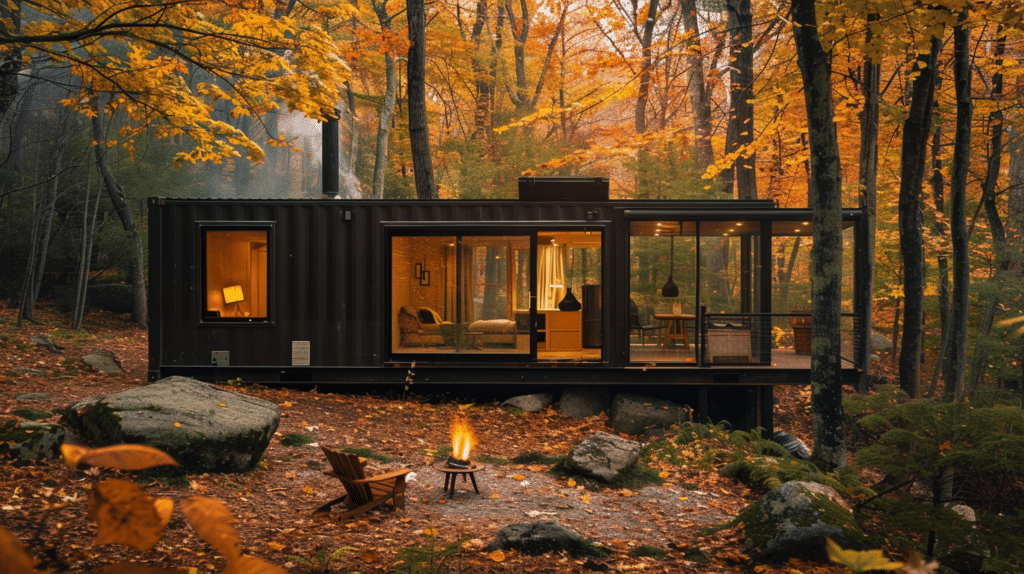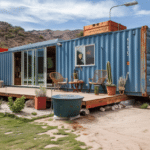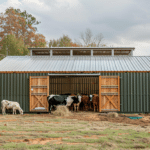Table of Contents
ToggleTransforming a Shipping Container into a Rustic Cabin in the Woods
In recent years, the concept of repurposing shipping containers into habitable spaces has gained immense popularity, offering an eco-friendly and cost-effective solution for constructing unique dwellings. Among the many possibilities, one of the most intriguing is the transformation of a shipping container into a cozy cabin nestled in the heart of nature. With a bit of creativity, careful planning, and DIY spirit, you can turn a rugged steel box into a charming retreat that harmonizes with its woodland surroundings. Here’s a comprehensive guide on how to embark on this adventure:
Planning and Design
Before diving into the construction process, it’s crucial to thoroughly plan and design your cabin. Consider the following aspects:
- Location: Choose a secluded spot in the woods that offers privacy and natural beauty. Ensure you have legal permission to build on the chosen site and comply with local regulations.
- Size and Layout: Determine the dimensions of your shipping container and sketch out a floor plan that maximizes space efficiency. Consider the number of rooms, their layout, and essential amenities.
- Utilities: Plan for essential utilities such as electricity, plumbing, and heating. Depending on your preferences and location, you might opt for off-grid solutions like solar panels and composting toilets.
- Insulation and Ventilation: Insulate the container to regulate indoor temperature and prevent condensation. Adequate ventilation is crucial to ensure airflow and prevent moisture buildup.
Preparing the Container
Once you’ve finalized the design, it’s time to prepare the shipping container for its transformation:
- Cleaning and Sandblasting: Thoroughly clean the interior and exterior of the container to remove rust, dirt, and any residual chemicals. Sandblasting can be effective in removing rust and preparing the surface for painting.
- Cutting Openings: Decide where you want doors, windows, and other openings. Use a cutting torch or angle grinder to carefully cut through the steel walls. Be sure to reinforce the edges to maintain structural integrity.
- Structural Reinforcement: Shipping containers are designed to withstand heavy loads, but modifications can weaken their structural integrity. Reinforce the container as needed to support additional weight and structural changes.
Insulation and Interior Finishing
Proper insulation is essential to make your cabin comfortable and energy-efficient:
- Insulation Materials: Choose insulation materials suited to your climate and budget. Common options include spray foam, rigid foam boards, and mineral wool.
- Interior Finishing: Install interior walls, flooring, and ceiling to create a cozy living space. Consider using reclaimed wood or other sustainable materials to maintain the rustic charm of the cabin.
- Utilities Installation: Install electrical wiring, plumbing fixtures, and any other necessary utilities according to your design plan. Seek professional assistance if you’re not familiar with these systems.
Exterior and Exterior Décor
Enhance the exterior of your cabin to blend seamlessly with its natural surroundings:
- Exterior Cladding: Consider adding wood, stone, or other natural materials to the exterior walls to soften the industrial look of the shipping container.
- Roofing: Install a sloped roof to prevent water pooling and facilitate rainwater runoff. You can use traditional roofing materials such as metal or asphalt shingles.
- Landscaping: Landscaping can further integrate your cabin into its woodland setting. Plant native trees, shrubs, and flowers around the cabin and create pathways using natural materials like gravel or wood chips.
Furnishing and Decorating
Finally, furnish and decorate your cabin to create a cozy and inviting atmosphere:
- Furniture: Choose furniture that complements the rustic aesthetic of the cabin. Consider multifunctional pieces to maximize space efficiency.
- Décor and Accessories: Add personal touches with artwork, textiles, and other décor items that reflect your style and personality. Incorporate natural elements like wood, stone, and plants to create a warm and welcoming ambiance.
- Outdoor Living Spaces: Create outdoor living spaces such as a deck or patio where you can relax and enjoy the beauty of nature. Consider adding a fire pit or outdoor seating for gatherings with family and friends.
By following these steps and unleashing your creativity, you can transform a simple shipping container into a charming cabin in the woods—a sanctuary where you can escape the hustle and bustle of modern life and reconnect with nature. Embark on this DIY adventure and discover the joys of sustainable living and rustic elegance in your own woodland retreat.






